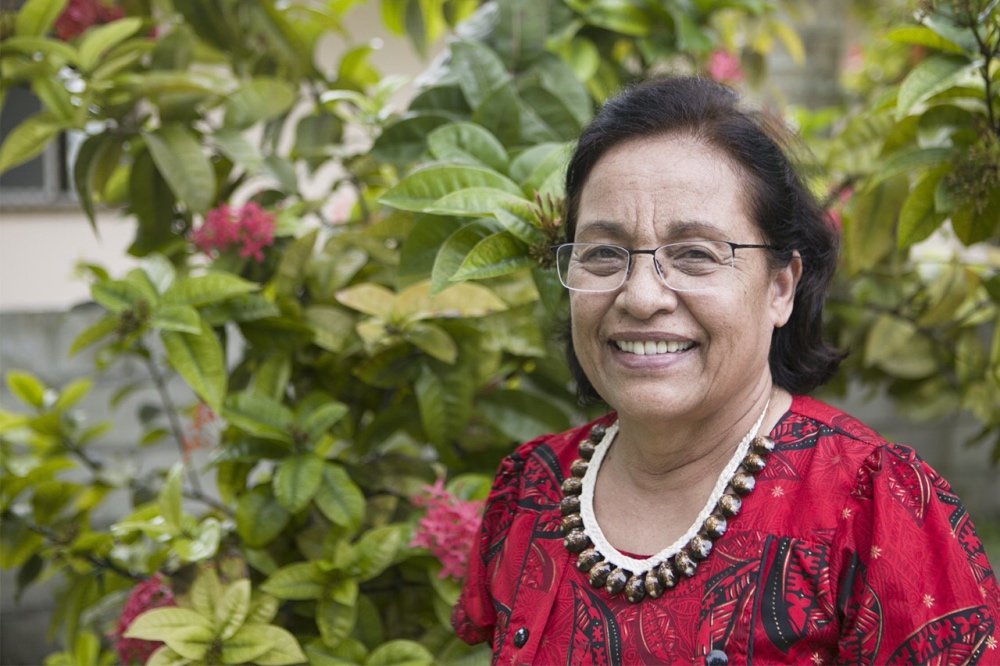
NICOLE MILNE, writing for Thomson Reuters Foundation, speaks with Hilda Heine, the Pacific island’s first female leader, following her loss at the nation’s recent presidential election…
Majuro, Marshall Islands
Thomson Reuters Foundation
In the low-lying Marshall Islands, even a former President must deal with seawater washing into the garden of her modest home as ocean levels creep higher on a warming planet.
“It’s getting worse here every year,” said Hilda Heine, the Pacific island’s first female leader, days after losing the presidency to her political rival, David Kabua.

The first female President of the Marshall Isles, Hilde Heina, photographed in the last days of her presidency, in her home, in Majuro, the capital of the Marshall Islands, on 10th January. PICTURE: Thomson Reuters Foundation/Nicky Milne
“Water comes over my own seawall here in my garden every month. Other global leaders may not take this so seriously, but we can’t close our eyes,” Heine told the Thomson Reuters Foundation, sitting under a coconut tree at her house in the capital, Majuro.
The Republic of the Marshall Islands comprises about 30 far-flung tropical atolls set between Australia and Hawaii. The average elevation of most of them is roughly two metres above sea level.
“It’s getting worse here every year…Water comes over my own seawall here in my garden every month. Other global leaders may not take this so seriously, but we can’t close our eyes.”
– Hilde Heina, former President of the Republic of the Marshall Islands
Tidal waves, known locally as “king tides” or “inundations”, flood the land regularly with increasing ferocity, leaving behind piles of car tyres, tin cans and other waste and debris.
In island countries with higher points, there are places to retreat to – mountains or hills where communities can regroup, Heine explained.
But in the Marshall Islands – controlled by the United States for more than three decades until 1979 and a site of its nuclear weapons testing on Bikini Atoll – there is nowhere to go.
People are regularly evacuated from their homes as rising seas claim more of the islands’ often cramped and flimsy houses, threatening to make them uninhabitable in coming decades.
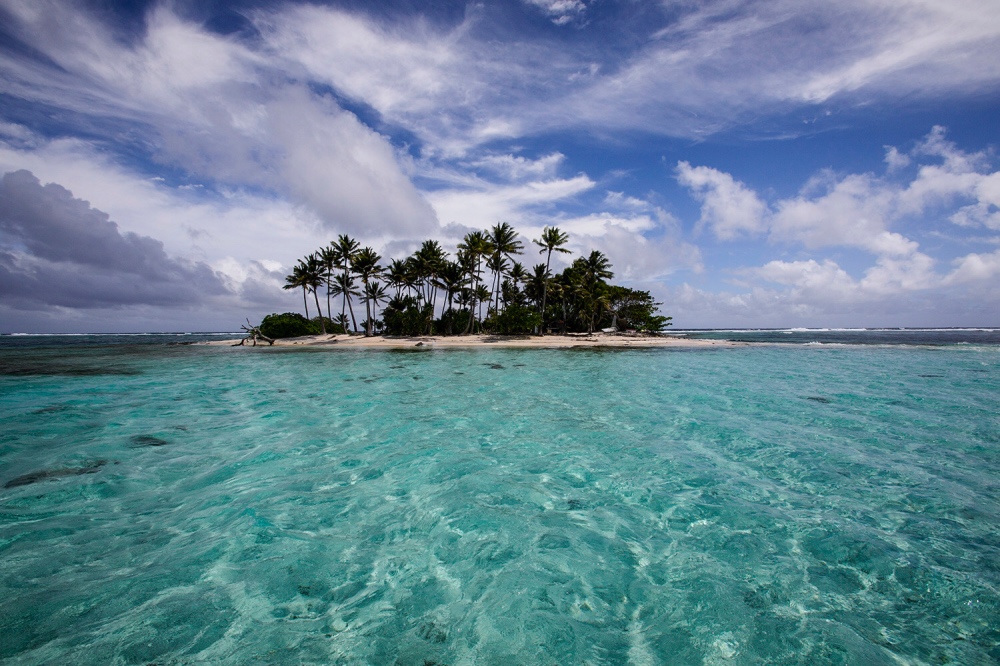
One of the uninhabited atolls, known as little Ebeye, in the Marshall Islands, on 8th January. PICTURE: Thomson Reuters Foundation/Nicky Milne
Heine said her government had put global warming – a longstanding challenge – front and centre of its policies at home and abroad during its four-year term.
“While the world talks about climate change, for us it’s an existential threat and we have done our best to take the issue to the international arena,” she said in an interview.
“While the world talks about climate change, for us it’s an existential threat and we have done our best to take the issue to the international arena.”
– Hilde Heina.
Given the urgency of the threat, Heine said she was confident initiatives she had put in place would be continued under the administration of Kabua, who was sworn in on Monday and whose father was the country’s first president.
In the Marshall Islands, destructive tidal waves have been interspersed with droughts, affecting food supplies, plants and human health in the atoll nation.
Health emergencies have been declared eight times in the last four years, including for outbreaks of mosquito-borne diseases such as dengue, Zika and chikungunya, all of which Heine linked to climate change.
But abandoning the country to the sea and leaving it is not an option most Marshallese want to even consider, she added.
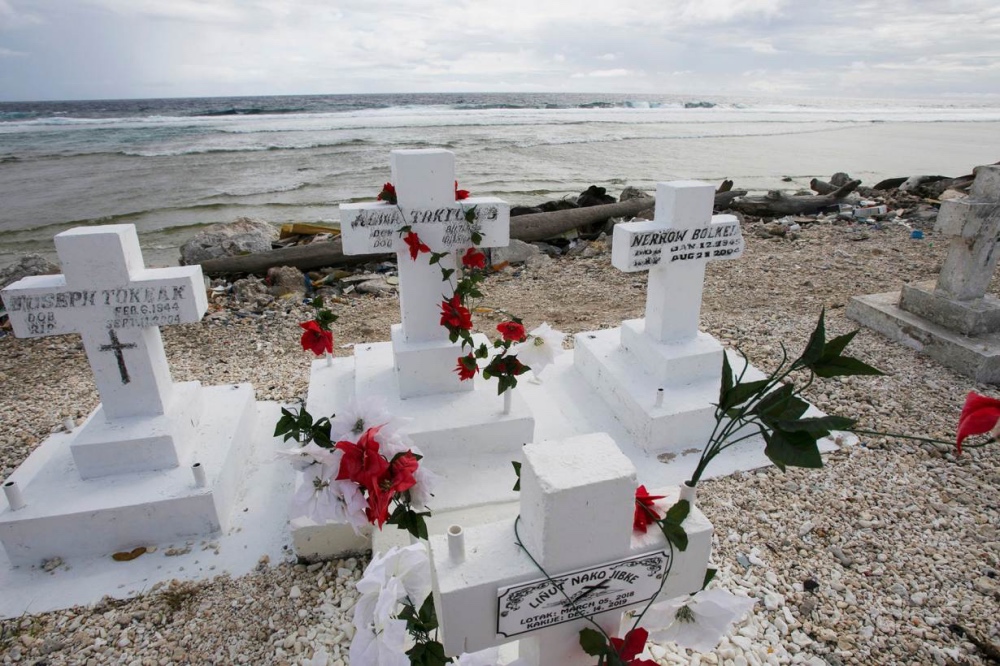
A graveyard at risk of washing away as sea levels rise and high tides regularly flood the Marshall Island of Ebeye, on 9th January. PICTURE: Thomson Reuters Foundation/Nicky Milne
Some families have already witnessed the graves of deceased relatives washed out to sea, causing much sadness, she noted.
“We see our culture and language as very much tied to the land. If we had to pick up and go, there is no guarantee these would survive,” she said.
Heine expressed disappointment at the outcome of December’s UN climate talks in Madrid, after she led a group of 48 climate-vulnerable nations in urging big carbon-polluting countries to step up their climate action plans.
Many countries such as Australia – which is now grappling with devastating wildfires – are not taking the issue as seriously as they should, she added.
“If every country, every leader thought like that, then there is no way we will be able to control the impacts of climate change,” Heine said.
Her government secured funding from the World Bank and the Green Climate Fund to build extensive protective sea walls on the islands, she noted.
And it has sought to lead by example, for example by installing solar panels across Ebeye, Majuro and outer islands and by switching to more environmentally friendly air-conditioning in its buildings.
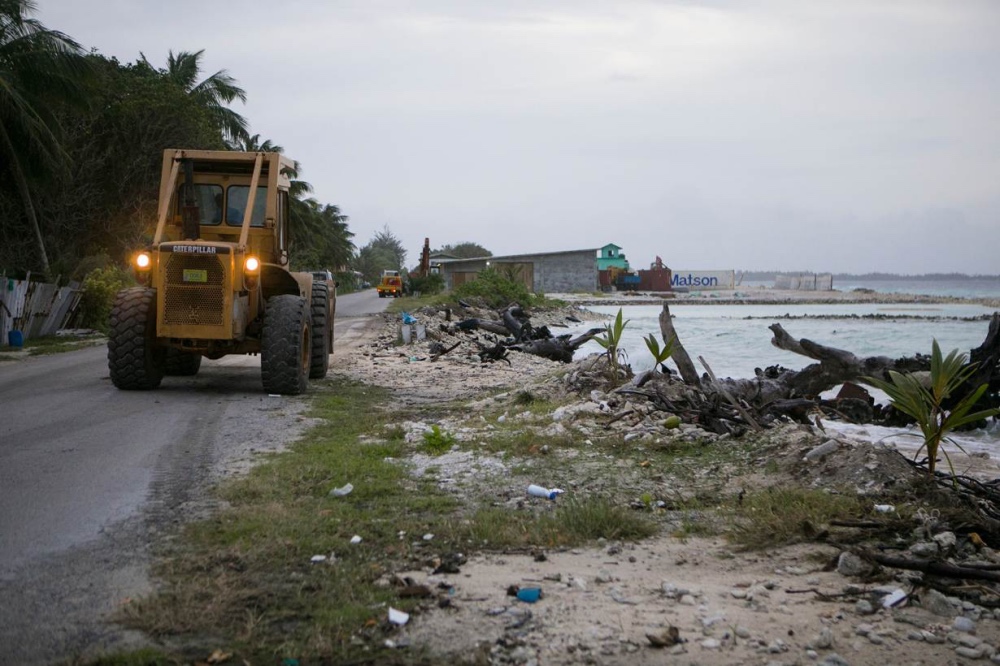
A digger scoops boulders and branches from the airport road in Majuro after high tide floods the road, on 11th January. PICTURE: Thomson Reuters Foundation/Nicky Milne
The Marshall Islands became the first country to submit a strengthened climate action plan to the United Nations last year before a 2020 deadline, aiming to reduce its emissions, which are already just a tiny fraction of the global total.
Besides becoming a driving force in the global climate change movement alongside her daughter, the poet Kathy Jetnil-Kijiner, Heine has also been an outspoken advocate of women’s rights.
The former teacher, with a doctorate in education, had not expected a woman could become president in a country steeped in tradition, until she was elected leader in 2016.
“I was quite surprised when it happened and I knew it wouldn’t last too long,” she said.
She noted that her government secured a million dollars from Taiwan to start an empowerment fund for women, to help them take out loans and start their own businesses.
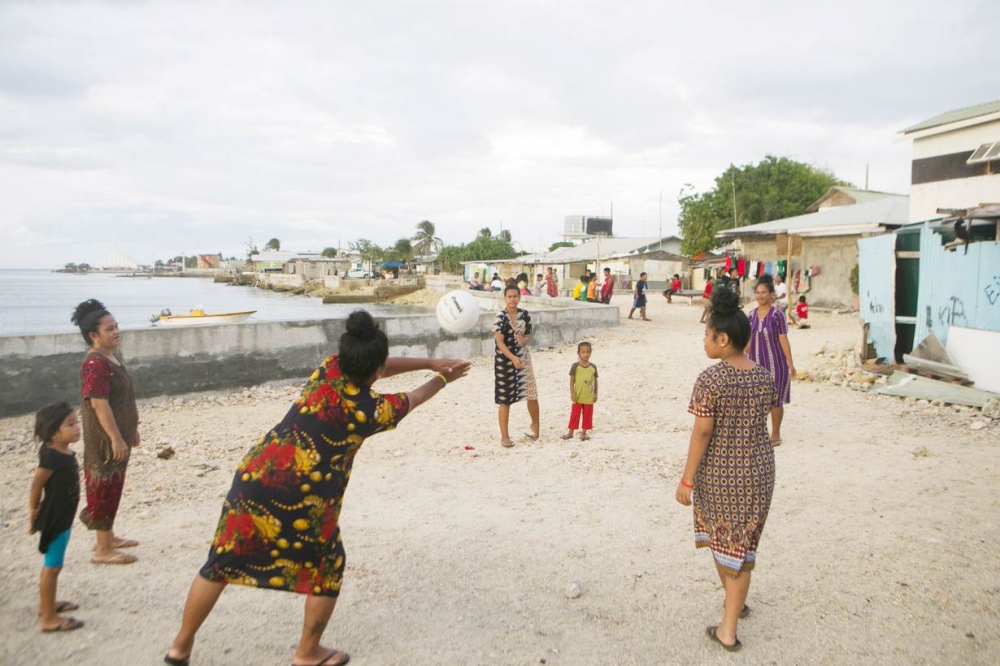
Women and children play ball at the edge of the ocean on the Marshall Island of Ebeye, on 9th January. PICTURE: Thomson Reuters Foundation/Nicky Milne
Statistics from other countries show that where women are actively involved in the political system, the quality of life is better, Heine noted.
“Women are the backbone of family and community so I believe they should be the backbone of national leadership,” Heine said, noting she hoped younger women would see her as a role model.
“I would have liked another term [as president],” she admitted, her smile tinged with sadness.





